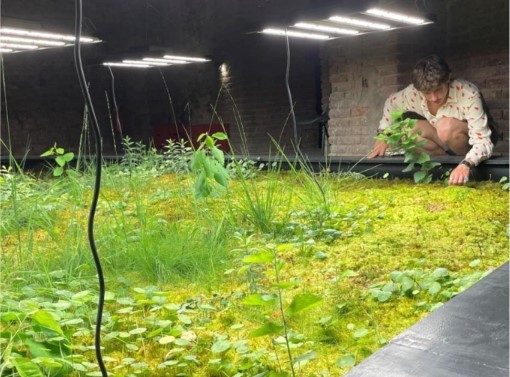Columbia Sociologist Explores Significance of Chile's Peatlands
Peatlands cover about three percent of the Earth’s terrestrial surface and hold nearly one third of the carbon in the planet’s soil. Thanks to support from the Santiago Center, Columbia Sociologist, Denise Milstein, has been able to contribute to collective work - research, art, advocacy, and activism - regarding peatlands in Chile.

Denise Milstein, senior lecturer and director of the Master’s Program at Columbia’s Department of Sociology, has been collaborating with artists, scientists and activists mobilizing to preserve peatlands, particularly in Chile.
Why is a sociologist involved in such an enviornmental endeavor? Thanks to support from the Santiago Center, “this role has allowed me to contribute to collective work, resulting not only in research, but in art works, advocacy, and activism on behalf of peatlands,” she noted. "I have learned that the impetus for social scientists to step beyond observation, into involvement, parallels the impulse for artists to engage with scientists, policy-makers, and activists."
Peatlands - terrestrial wetland ecosystems found in every climatic zone which cover about three percent of the Earth’s terrestrial surface, according to the International Peatland Society - store and sequester more carbon than any other type of terrestrial ecosystem, even exceeding forests. They hold nearly one third of the carbon in the planet’s soil, Milstein said, but when peatlands are destroyed, the CO2 they store is released into the atmosphere, exacerbating global warming. Besides protecting the planet from climate change, peatlands are also essential in supporting biodiversity, decreasing flood risk, and purifying water.
Since 2015, Milstein has been a member of Ensayos, a collective of artists, scientists, and environmental activists dedicated to researching the human geography and ecology of Tierra del Fuego - an archipelago at the southernmost tip of South America, shared between Chile and Argentina, which contains a significant amount of the two countries’ peatlands. With the Ensayos collective, as a researcher, writer, and performer she contributes to practices that interweave art, social science, and environmental research.
In June 2021, during the second Bi-national Peatland Seminar between Chile and Argentina, Ensayos members participated in the establishment of the Patagonian Peatland Initiative, laying the ground for the curatorial project, Turba Tol Hol-Hol Tol, meaning “heart of the peatlands” in the language of the Selk’nam, one of the indigenous communities which has inhabited Tierra del Fuego for over 10,000 years. The project was selected to represent Chile at the 59th Venice Biennale from April to November of 2022, involving the installation of a peatbog and an immersive film in the Chilean Pavilion.

The Turba Tol project, along with Ensayos and several other NGOs, were the main organizers of the Venice Agreement for the Protection of Peatlands, signed in June 2022. With backing from the Santiago Center, Milstein traveled to Venice to participate in the international assembly of peatland scientists, artists, and activists to articulate and commit to an international agreement for the protection of peatlands. She also carried out participant observation and contributed to the scent component of the Turba Tol installation at the Biennale.
The Chile exhibition at the Venice Biennale included a footpath leading through a peatbog to a circular screen where visitors could watch a 360° film made in the Tierra de Fuego peatlands. The experience was immersive, according to Milstein. “This film plunged viewers into the peatland, traveling down in space and back in time through ancient layers of peat, then pulled them up to re-emerge at ground level, in the middle of a round of dancers celebrating and chanting in the Selk’nam language,” she said. “The installation created a connection between visitors and peatlands through sound, touch, smell, and image while also relaying pressing concerns about peatbog preservation. Through a celebration of the historical relationship between the peatbog and Selk’nam people, the installation evoked alternative forms of co-existence between humans and their environment.”

Her experience and research with Turba Tol Hol-Hol Tol, the Venice Agreement, and ongoing work with Ensayos has transformed her traditional role as a social scientist into that of an active participant and transdisciplinary researcher, Milstein said. “Harnessing that impetus, this project exemplifies the interweaving of disciplines on behalf of a reality that is already interwoven: that of humans and non-humans, which, in this moment of crisis, calls for urgent recognition that human communities must learn together to co-exist with other living and natural communities and environments.”
Use this link to read Milstein’s full report.
